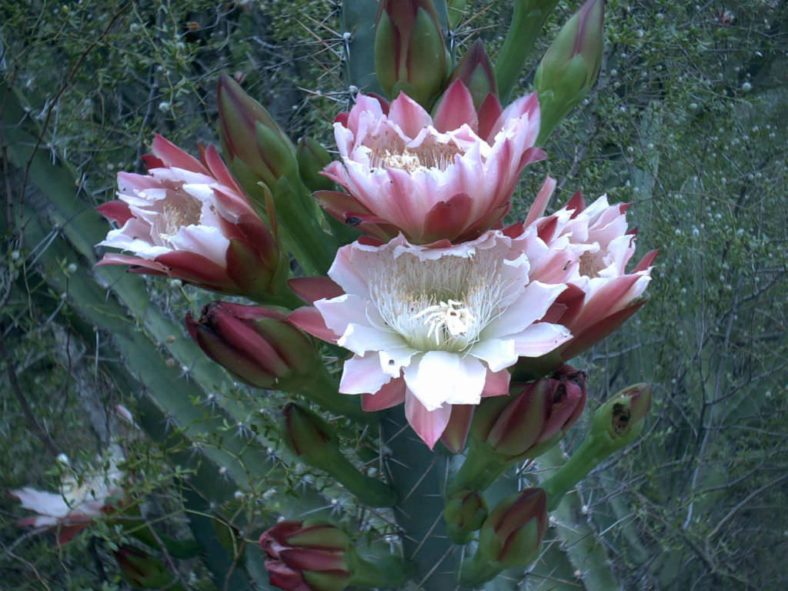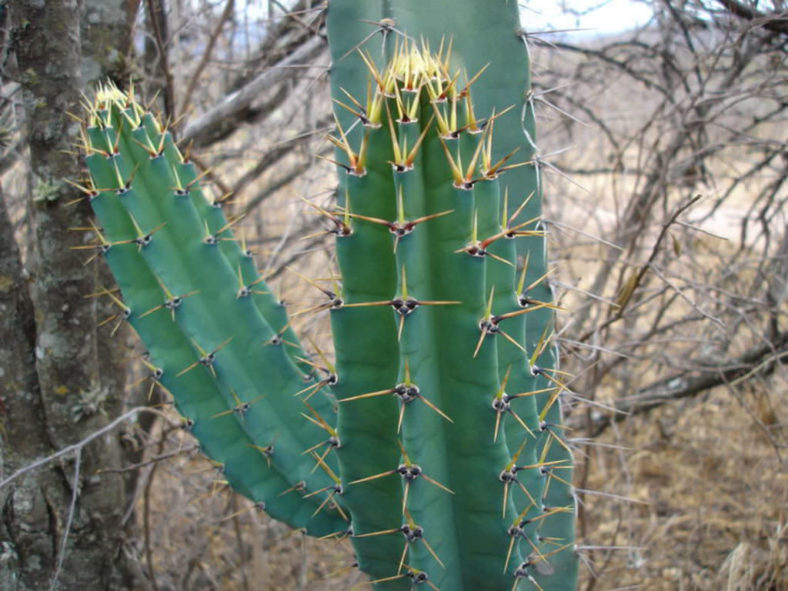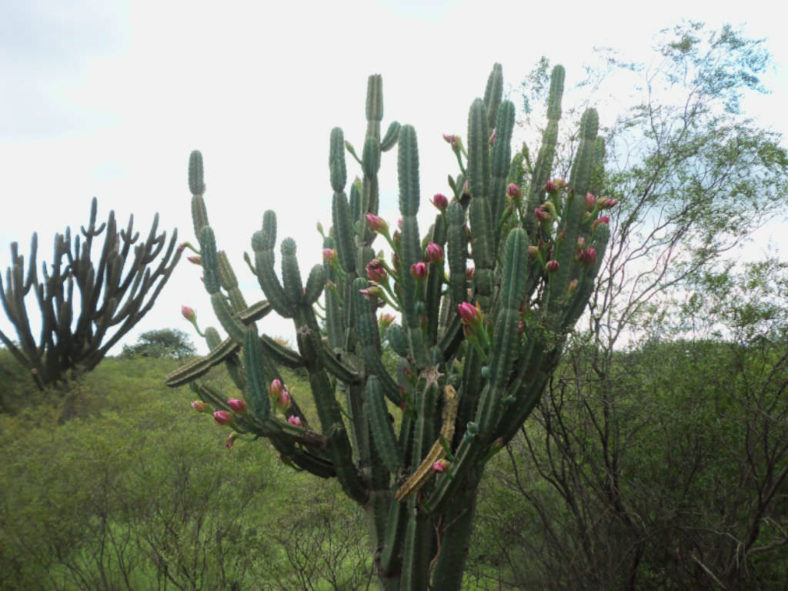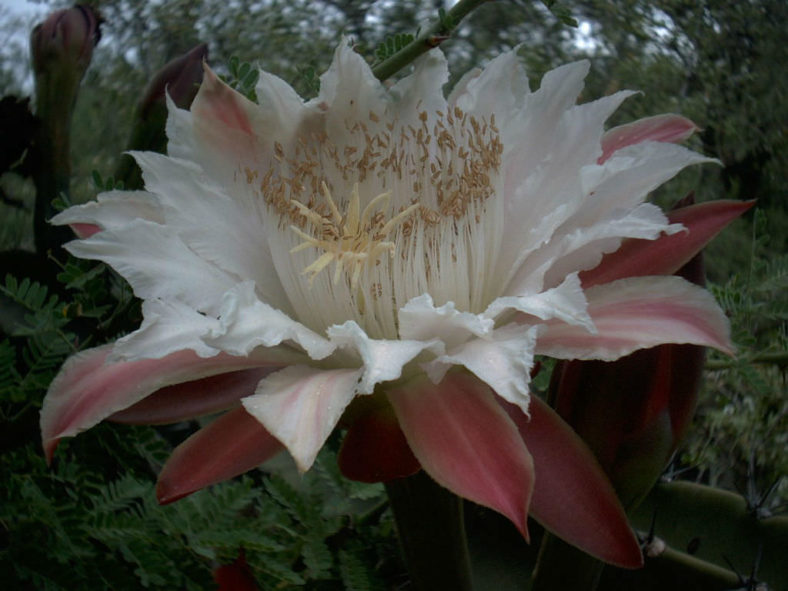Scientific Name
Cereus forbesii C.F.Först.
Synonym(s)
Piptanthocereus forbesii
Scientific Classification
Family: Cactaceae
Subfamily: Cactoideae
Tribe: Cereeae
Genus: Cereus
Etymology
The specific epithet "forbesii" (pronounced "FORBZ-ee-eye") honors James Forbes (1773-1861), a British gardener and botanist, who was the head gardener for the Duke of Bedford at Woburn Abbey.
Origin
Cereus forbesii is native to South America (Argentina, Bolivia, Paraguay). It grows atop arid, windswept hills, within sparse forests, wooded plains, and also on the edges of salt flats at elevations between 1,640 and 6,560 feet (500 and 2,000 m)
Description
Cereus forbesii is a shrubby or tree-like cactus with cylindrical stems that have 4 to 8 blunt ribs lined with areoles that bear clusters of spines. It typically grows to 9.8 feet (3 m) tall, though larger specimens have been recorded exceeding 23 feet (7 m). The branches are initially blue-green, later turning light green, and can reach a diameter of 3.2 inches (8 cm). The small, gray areoles usually bear one, occasionally up to three, central spines and five radial spines. The central spines can grow up to 6.4 inches (16 cm) long, while the radial spines can measure up to 0.8 inches (2 cm) in length. The spines are yellowish-brown, darker at the base, and turn gray as they age.
In the summer, Cereus forbesii produces white to reddish flowers that can reach a length of 8 inches (20 cm) and a diameter of 5 inches (12.5 cm). The fruits are red, with lilac pulp and tiny black seeds.
There is confusion between Cereus forbesii and Cereus validus, as they are sometimes listed as synonyms for one another.

Forms of Cereus forbesii
Cultivars of Cereus forbesii
How to Grow and Care for Cereus forbesii
Hardiness: USDA hardiness zones 9b to 11b: from 25°F (-3.9°C) to 50°F (10°C).
Like most cacti, Cereus are relatively low-maintenance and hardy. Ensure they receive sufficient water without becoming waterlogged, especially during the summer, and fertilize them for optimal results. If the roots have turned black or become overly soft, the cactus may be experiencing root rot. Cut away the affected parts and replant them. Most gardeners interested in cacti should be able to cultivate these without much problem.
If your Cereus outgrows its container, you may need to repot it. If so, ensure the soil is dry and then remove the pot. Knock away old soil and prune any rotted or dead roots, then replant in a new pot and backfill with fresh soil. Do not overwater cacti planted in new pots, as this can lead to root rot. It should be left to dry for about a week, then watered lightly.
These cacti propagate pretty easily from cuttings. Sever a branch and replant in moist, well-drained soil.
See more at How to Grow and Care for Cereus.
Links
- Back to genus Cereus
- Succupedia: Browse succulents by Scientific Name, Common Name, Genus, Family, USDA Hardiness Zone, Origin, or cacti by Genus
Photo Gallery
Click on a photo to see a larger version.


